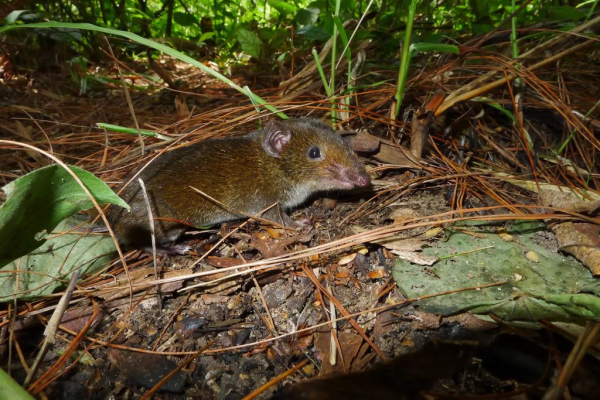KPL
A lizard with a name that sounds like it could star in Game of Thrones, a soft furred hedgehog, a high-altitude crocodile newt, a freshwater fish already well known among aquarium enthusiasts, and a new genus of palm tree are just some of the of the 234 species described by scientists in the Greater Mekong region of Southeast Asia in 2023, according to a report released today by WWF.
Conservation organization urges action to prevent shrinking habitats and unsustainable wildlife trade

(KPL) A lizard with a name that sounds like it could star in Game of Thrones, a soft furred hedgehog, a high-altitude crocodile newt, a freshwater fish already well known among aquarium enthusiasts, and a new genus of palm tree are just some of the of the 234 species described by scientists in the Greater Mekong region of Southeast Asia in 2023, according to a report released today by WWF.
With many of the species already under threat of extinction from human activities, WWF is calling on governments in the region to increase conservation of these rare, amazing creatures and their habitats.
The report documents the work of hundreds of scientists from universities, conservation organizations and research institutes around the world who discovered 173 species of vascular plants, 26 reptiles, 17 amphibians, 15 fishes and three mammals in Cambodia, Laos, Myanmar, Thailand and Viet Nam. This brings the total number of vascular plants and vertebrate animals described in the Greater Mekong region since 1997 to 3,623.

“Although these species were just described by science last year, they have been living in the unique habitats of our region for many millennia,” said Chris Hallam, WWF-Asia Pacific regional wildlife lead. “Each of these species is a critical piece of a functioning, healthy ecosystem and a jewel in the region's rich natural heritage. And the researchers are equally as precious! They are working passionately and tirelessly to describe these species under trying conditions, unfortunately often with little resourcing.”
Highlights of the report include:
A ginger species that has a root that smells like mango
● A leafless orchid that was found in a market and is likely already threatened by overexploitation
● A rosy loach fish, only just described by science despite being common in the aquarium trade
● A bright orange crocodile newt living at a new elevation record for its type, found between 1,800m and 2,300m above sea level
●A karst dragon lizard - with a name that sounds like it came out of Game of Thrones - that represents not just a new species but a new genus
●A “simply gorgeous” pit viper snake with beautiful scales that make it look like it has long eyelashes
●A keelback snake named after the H’mong ethnic group
● A shrew mole that weighs only 8g - putting it within the top 10 lightest species of terrestrial mammal on earth
●A soft furred hedgehog with sharp fangs, named based on the Vietnamese word for vampire
Species are discovered in a variety of different ways. Some are collected during field visits and sit in natural history museums and botanical gardens for years - sometimes for decades before they are analyzed and identified. Gernot Vogel, one of the researchers who contributed to the discoveries highlighted in the report, emphasizes the importance of these collections, calling them “the memory of life on our planet.”
Sometimes, species are found in trade, as is the case with many orchid and aquarium fish species. “We must ensure that these species are described and understood so that we don’t lose them to overexploitation before they’re ever described in the wild,” said Loris Palentini, Country Director of WWF-Laos.
Biodiversity in the Greater Mekong is under intense pressure from habitat loss and degradation, overexploitation including from the illegal wildlife trade, climate change, pollution, invasive species and diseases, according to the Living Planet Report. To stop wildlife declines, WWF works with communities, governments and many others to better understand species, strengthen their conservation, and address critical threats like wildlife crime and overexploitation.
KPL